If you want to come down from a marijuana high, we’re here to help. Overdoing it can happen to anyone, but you can make the recovery process better–and sometimes faster–if you know how to take care of yourself. Here are five tips and tricks for coming down from a marijuana high.

First things first, remember that there’s no need to panic. You are going to be fine. You can’t overdose from marijuana. It’s not possible to die from THC. If you’re experiencing unpleasant side effects like nausea or anxiety, these feelings will pass with a bit of time.
You may be wondering how long it takes to sober up from weed. This depends on your consumption method, dose, and personal tolerance. On average, it takes between 1 to 3 hours to sober up from vaping or smoking weed. When you eat or drink marijuana, sobering up can take much longer because you’re consuming weed through the digestive process. The high from weed edibles tends to peak at around 2 to 4 hours, then can linger for up to 12.
Right now, you’re playing a waiting game. Sobering up may take anywhere from minutes to hours, but it will happen. While you wait for your high to wear off, there are things you can do to make yourself more comfortable and potentially even sober up more quickly.

Hydrating will help your body work its best as it clears THC from your system. The best way to hydrate right now is by drinking plenty of water and other caffeine-free drinks. You want to avoid caffeine because it can actually enhance psychoactive effects, which is probably the last thing you want at the moment.

If you want to ease negative side effects or sober up more quickly, there are a few remedies you can try at home:

While you wait for your high to wear off, distract yourself. Focusing on the fact that you’re high could worsen mental symptoms like anxiety, so find a way to direct your attention elsewhere.
What’s distracting varies from person to person. Not sure what to do? Try one of these ideas:
Often, the best way to recover after getting too high is to simply sleep it off. Your body will keep working on flushing the THC while you’re asleep, so you may feel much better when you wake up. If you’re able to drift off, a nap or a good night’s sleep may be just the remedy you need.
While there’s no way to instantly come down from a high, there are ways to feel more comfortable as you wait things out. After you’ve sobered up, you can consider what factors led you to feeling too high and avoid them in the future.
If you need advice on dosage, don’t hesitate to ask one of our dispensary team members. We’re always happy to answer your questions and provide guidance on how to use different products. We can also recommend products that create a less intense experience, like high-CBD strains and microdosing products.
While the old stereotype is that marijuana users are lazy, many modern cannabis fans are avid fitness enthusiasts. People are using cannabis pre and post-workout, and some even say they use it to improve their athletic performance. But can marijuana really help you work out?
Anecdotal and scientific evidence that suggests marijuana may help improve post-workout recovery and help you enjoy exercising more. Let’s go over five ways marijuana could help you work out.
Cannabis and Enjoying Exercise

Anecdotally speaking, many people say weed helps them focus and get in the zone for their workouts, and just generally makes the process more fun. When working out is more enjoyable, it creates a more positive relationship with fitness. In turn, that can make you want to work out again in the future.
There haven’t been many studies done on cannabis and working out, specifically. However, findings from other studies can give a clue as to why people say cannabis makes their workout routines more fun. Studies have shown that low doses of marijuana can be good for stress reduction and cognitive function, both of which could make working out more enjoyable.
With that said, high doses of THC aren’t ideal for heavy workouts, workouts requiring precise timing, or workouts requiring excellent motor skills. THC can slow reaction times and decrease stability. So while many enjoy using low-dose cannabis for lighter workouts, it’s not a great idea to consume a high dose of THC right before lifting weights or doing complex forms of exercise.
Cannabis and Reducing Inflammation
Cannabis’s ability to reduce inflammation has been intensely studied. Many studies show that marijuana appears to have anti-inflammatory properties, which may give it the ability to do things like ease chronic pain and reduce swelling.
After you exercise, you will experience some inflammation. Inflammation is a crucial part of building muscle mass, increasing blood flow, and recovering post-workout. However, while some inflammation is expected, you don’t want to experience intense inflammation after a workout. Intense inflammation can cause pain, soreness, and stiffness in the short-term. Long-term, it can lead to chronic inflammation and a wide range of health issues.
You can take steps to ensure you don’t experience excessive inflammation after a workout. Many things recommended by trainers–like stretching, massage, and taking rest days–can help keep inflammation levels down. Consuming things with anti-inflammatory effects, such as cannabis, may also help keep inflammation levels down.
Cannabis and Pain Relief

Numerous studies suggest that cannabis can ease pain. Medical marijuana studies have found that the compounds in marijuana plants can ease muscle pain, joint pain, and even nerve pain.
Some experts, such as psychology and neuroscience professor Angela Bryan, say that this may help people stay active, especially older people. “As we get older, exercise starts to hurt, and that is one reason older adults don’t exercise as much,” says Bryan. “If cannabis could ease pain and inflammation, helping older adults be more active, that could be a real benefit.”
Cannabis and Easing Muscle Spasms
While muscle spasms can be a normal part of the muscle recovery process, they’re uncomfortable to experience. Some studies show that marijuana may have medicinal properties that can help those experiencing spasms. Research has found that cannabis can help treat muscle spasms related to the diseases multiple sclerosis and Parkinson’s, and animal studies suggest it could help reduce post-workout muscle spasms.
Cannabis and Sleep

Getting better sleep benefits not only your athletic performance, but also your overall wellness. And improved sleep happens to be one of the most studied benefits of marijuana. THC can induce sleep, while CBD may improve sleep quality and help reduce daytime fatigue. For athletes who struggle with sleep quality or duration, a CBD or cannabis product could be beneficial.
Final Thoughts
Many people enjoy incorporating marijuana into their fitness plan, but only you can decide if that would be right for your health. If you’re considering using cannabis as a part of your workout regiment, experts typically recommend starting with a low dose and gentle exercise. Start low and slow, then see how you feel from there.
In recent years, there has been a growing interest in cannabis and its various forms. One particular component of the cannabis plant that has gained significant attention is cannabis resin. Also known as hashish or simply "hash," cannabis resin holds a rich history and a wide range of applications. Whether you're a seasoned cannabis enthusiast or a curious newcomer, understanding the basics of cannabis resin can enhance your knowledge and appreciation for this remarkable substance.
In this comprehensive guide, we will delve into the world of cannabis resin, exploring its origins, extraction methods, chemical composition, and potential uses. We'll also address some common misconceptions and provide insights into its legal status in different parts of the world. By the end, you'll have a solid grasp of the fundamentals of cannabis resin and how it fits into the broader cannabis landscape.
So, if you've ever wondered what cannabis resin is, how it differs from other cannabis products, or what makes it so highly sought after, you've come to the right place. Get ready to embark on a fascinating journey through the world of cannabis resin as we uncover its history, properties, and the myriad ways it can be enjoyed and utilized.
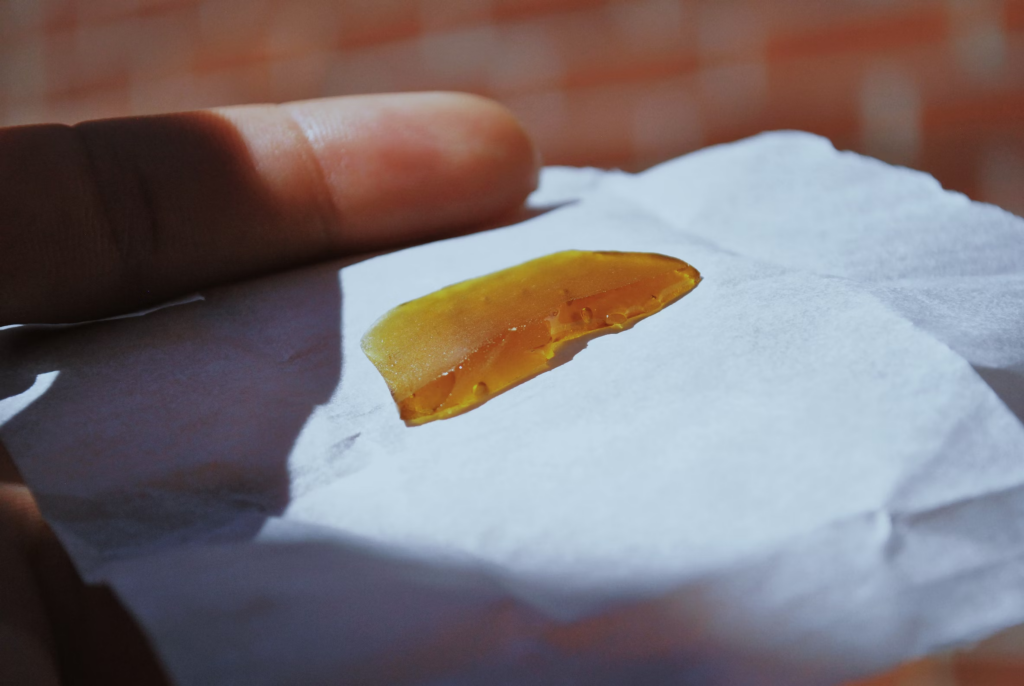
Live resin is a type of cannabis concentrate that has quickly gained popularity within the cannabis community due to its unique extraction process and exceptional characteristics. Unlike other cannabis concentrates, live resin is made using flash-frozen cannabis plants instead of dried and cured buds. This process allows for the preservation of the plant's natural terpene profile, resulting in a product with a robust and complex terpene profile.
Cannabis aficionados highly value live resin due to its ability to provide a more authentic and nuanced experience of the strain's natural aroma and flavor. The robust terpene profile of live resin provides a more complex and layered taste that allows users to fully appreciate the unique traits of each strain. The cannabinoid profile of live resin is also highly sought-after, as it can contain concentrated levels of THC, CBD, and other cannabinoids.
There are various types of live resin available, each with its unique color and texture. Amber/golden live resin is the most common variety, which often has a sugary texture and a bright, amber/gold color. White live resin, on the other hand, has a more crumbly texture and a pale yellow color. Other colors of live resin are also available, depending on the strain of cannabis used.
Live resin offers numerous benefits compared to other forms of cannabis resin. The use of fresh, flash-frozen cannabis plants preserves the terpene profile of the plant, resulting in a concentrate with a more robust and complex flavor. The potent cannabinoid profile of live resin, combined with its high terpene content, also offers users a more profound and long-lasting experience.

Live resin is a premium cannabis concentrate extracted from freshly harvested flowers. It involves flash-freezing the flowers to preserve their natural terpene and cannabinoid profiles. The process starts with immediate freezing of the flowers using liquid nitrogen or dry ice, ensuring the preservation of terpenes and cannabinoids.
The next step is a closed-loop extraction system utilized to extract valuable compounds from the plant material. This system prevents solvent leakage, ensuring a safe and efficient extraction process. Butane or supercritical CO2 are commonly used solvents known for their effectiveness and cleanliness.
Once the extraction is complete, a highly concentrated substance is obtained, containing all the beneficial compounds from the cannabis plant. To ensure purity, the substance undergoes purification and refinement to eliminate any residual solvents or impurities.
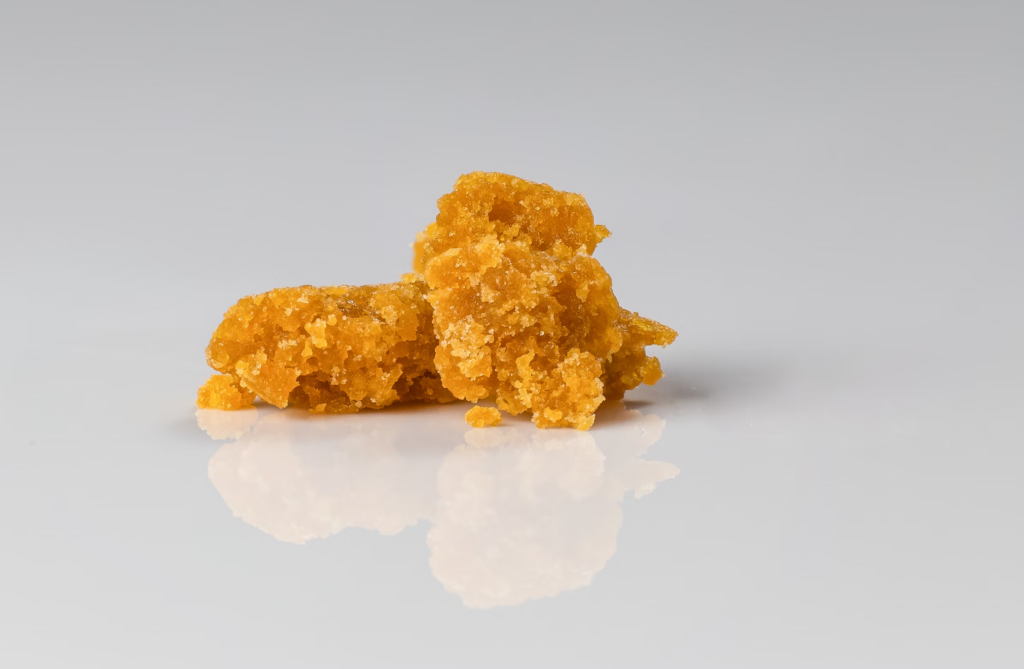
When it comes to cannabis concentrates, two popular options that are often compared are live rosin and live resin. While both are known for their strong potency and flavor, there are key differences in their production and characteristics.
Live Rosin
Live rosin is a type of concentrate that uses a solventless extraction process, meaning it does not involve any harmful chemicals. The process begins by freezing freshly harvested cannabis plant material to preserve its terpene content. This frozen material is then pressed at a low temperature using heat and pressure to extract the trichomes, resulting in a sticky, resinous substance with a golden color. Live rosin is known for its full-bodied terpene profile and intense flavor. Live rosin has a shiny golden color and a thick, sticky texture that can be easily manipulated using a dab tool. Known for its natural terpene profile and purity, it does not involve any solvents.
Live Resin
On the other hand, live resin is made using solvent-based extraction methods such as butane or propane. This process involves blasting the cannabis buds or plant material with a solvent to dissolve the trichomes, which are then separated from the solvent using heat and vacuums. Unlike live rosin, this process can result in a softer, budder-like texture and a more varied terpene profile depending on the strain used. Live resin can range in color from light yellow to darker amber and typically has a softer texture that can be harder to handle. The terpene profile of live resin will depend on the strain used and the extraction method, but it is generally known for its complex flavor profile.
It's worth noting that there are also dried plant-based resins and rosins that are made using similar extraction methods, but with cured or dried plant material instead of fresh, "live" plants. These concentrates may have a different terpene profile, color, and texture compared to their live counterparts.

Live resin can be used in various ways, each providing a unique experience. One way to enjoy it is by adding it to a joint or bowl of flower. Known as smoking live resin-infused flower, this method is simple yet effective. Start by grinding the flower and adding a small amount of live resin to it before rolling it up or packing it in a bowl. The live resin will enhance the flavor and potency of the flower, providing a more intense experience.
Another convenient way to use live resin is by using a live resin pen, which is a pre-filled vape cartridge making it easy to use and discreet making it a popular method. Simply attach the cartridge to a compatible battery and take a puff. The live resin pen allows for precise dosing and provides an on-the-go option for cannabis aficionados.
Traditional methods of dabbing live resin involve using a dab rig, e-nail, or nectar collector. Dab rigs are similar to bongs, but use a nail or banger instead of a bowl. The live resin is placed on the heated nail which vaporizes the concentrate, and the vapor is then inhaled through the rig. E-nails provide more precise temperature control and eliminate the need for a torch. Nectar collectors, also known as honey straws, are handheld devices used to vaporize live resin. They are typically made up of a glass or quartz tip and a straw-like body.
If you're a cannabis aficionado, then you're likely familiar with live resin, one of the most potent and flavorful forms of cannabis concentrates. But with so many live resin products available on the market, how do you choose the best one for your needs? Here are the essential factors to consider when selecting high-quality live resin:
1. Start with Quality Source Material: One of the most crucial factors in producing high-quality live resin is the source material. For the best results, look for live resin made from fresh, flash-frozen cannabis plants with a robust terpene profile. The source material will determine the final flavor, aroma, and overall potency of the live resin.
2. Choose a Reputable Extractor: The extraction method used to make live resin plays a vital role in the final product's quality. Therefore, it's essential to select a reputable extractor that specializes in solvent-based extraction methods, such as carbon dioxide or emotek labs. This ensures that the live resin is free from any harmful solvents or contaminants that could compromise its quality.
3. Check the Strain of Cannabis: Not all cannabis strains are suitable for live resin extracts. Some strains have a higher yield of resin than others, resulting in a more potent product. Therefore, it's essential to check the strain of cannabis used in the live resin to ensure that it's the right type for your preferences.
4. Pay Attention to the Terpene Content: The terpene content in live resin plays a significant role in the entourage effect and overall flavor. Thus, it's essential to select products that have a complex and natural terpene profile, providing a more potent and flavorful experience.
5. Look for Transparent Lab Testing Results: Finally, it's crucial to select live resin products with transparent lab testing results. This ensures that the product is free from contaminants and is safe for consumption. Always check for lab testing results before making a purchase.
Live resin, a type of cannabis concentrate, has become a popular choice among cannabis aficionados due to its complex terpene profile and robust flavor. However, when it comes to the question of safety, it is crucial to purchase live resin from licensed dispensaries and legal markets to ensure that it meets state health requirements.
Overall, live resin is generally safe to use, but it is essential to purchase it from a reliable source to ensure its quality. As a potent concentrate, live resin is much more potent than cannabis flower, so caution should be exercised when using it for dabbing or vaping. It is not recommended to eat live resin, as it can have adverse effects on your health.
Live resin is safe to use but should only be purchased from licensed dispensaries and legal markets to ensure that it meets health requirements imposed by the state. As a potent concentrate, it is not recommended to be eaten but can be used for dabbing or vaping. Always exercise caution when using live resin and follow dosage recommendations to prevent any adverse effects.
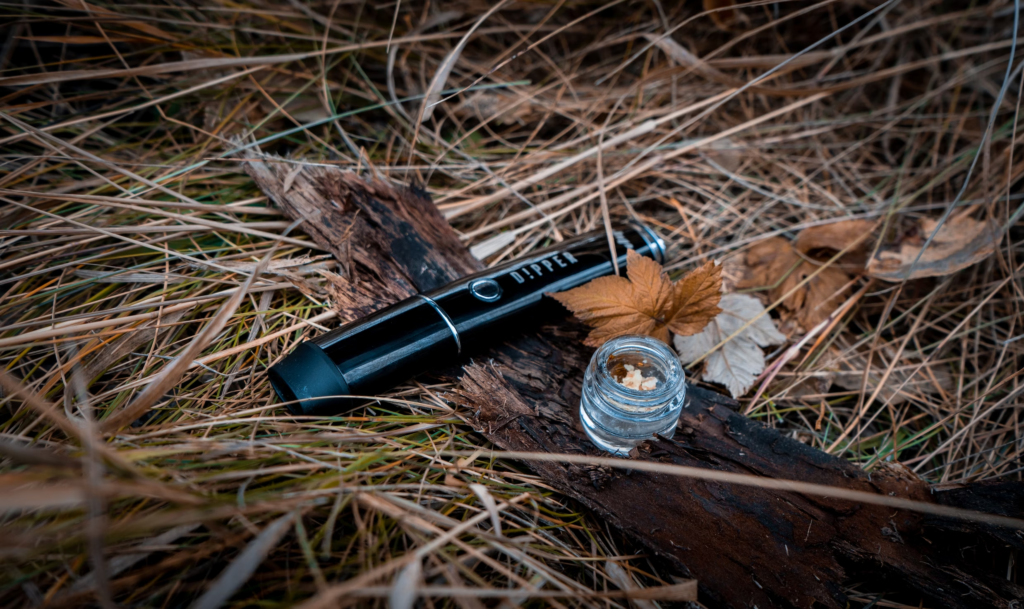
Discover the wonders of cannabis resin! With its robust terpene profile and high concentrations of flavonoids and THC, this essential component of the cannabis plant provides both psychoactive and therapeutic benefits. Learn about extraction methods, types, and modes of use in our comprehensive guide. Shop live resin products and other cannabis goodies at DC Collective to enhance your experience. Don't miss out on the complex terpene profiles and diverse uses of cannabis resin—it's a must-have for all cannabis enthusiasts. Dab or vape, there's something for everyone!
If you're a cannabis enthusiast or a beginner exploring the world of cannabis, you may have come across the terms "Sativa" and "Indica." These are two main types of cannabis plants that have distinct characteristics and effects. Understanding the differences between Sativa and Indica can help you make informed choices when selecting strains for your preferences and needs.
In this blog, we'll explore the key differences between Sativa and Indica, including their physical characteristics, effects, and terpene content. Let's dive into the fascinating world of Sativa vs. Indica and unravel how they differ!
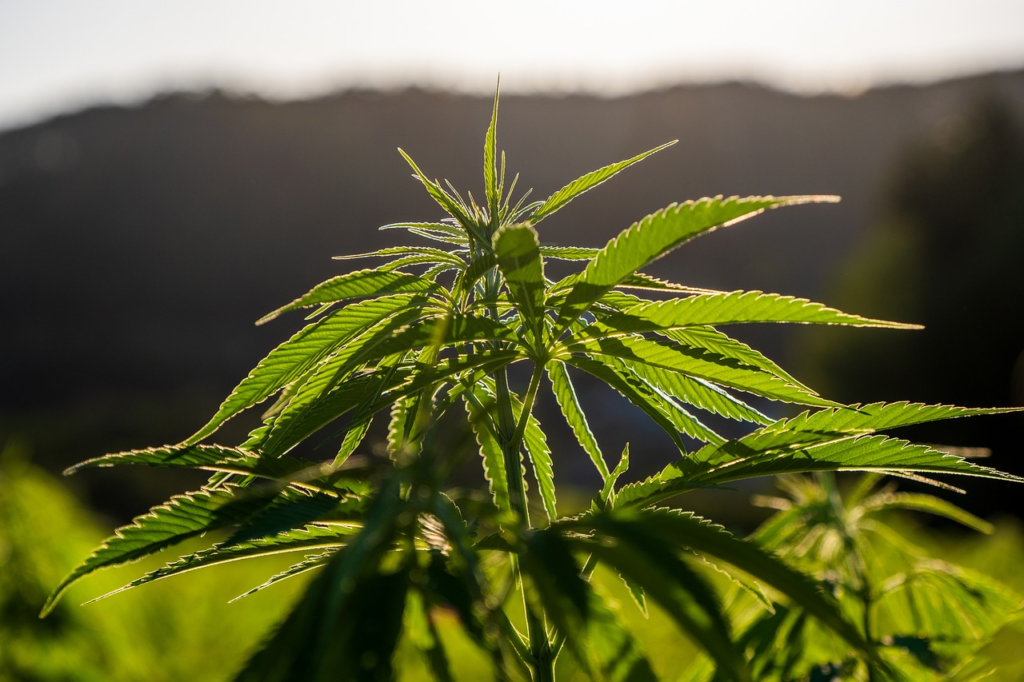
Sativa strains are believed to have originated in equatorial regions, such as parts of Africa, Southeast Asia, and South America. Historically, Sativa plants were cultivated for their fiber, seeds, and medicinal properties. Sativa strains are known for their tall and thin plants with narrow leaves, and they are often associated with uplifting and energizing effects.
Indica strains are believed to have originated in the Hindu Kush region of the Indian subcontinent. Indica plants are typically shorter and bushier with wider leaves, and they are known for their sedating and relaxing effects. Indica strains were historically used for their medicinal properties, including pain relief and relaxation.
Over time, cannabis cultivation and hybridization have resulted in a wide range of Sativa, Indica, and hybrid strains with varying characteristics. Today, the terms Sativa and Indica are commonly used to categorize cannabis strains based on their purported effects and physical traits, although the scientific validity of these classifications is debated.
Understanding the historical origins and evolution of Sativa and Indica can provide a foundation for further exploration of their differences in terms of plant morphology, effects, medicinal properties, growing requirements, aroma and flavor profiles, and popular strains. Cannabis laws and regulations vary by region, and it's essential to comply with local laws when growing, using, or discussing cannabis-related topics.
The physical characteristics of Sativa and Indica cannabis strains can vary significantly, providing valuable clues for identifying and differentiating between them. Understanding these differences can help cannabis enthusiasts and growers recognize the unique traits of each subspecies.
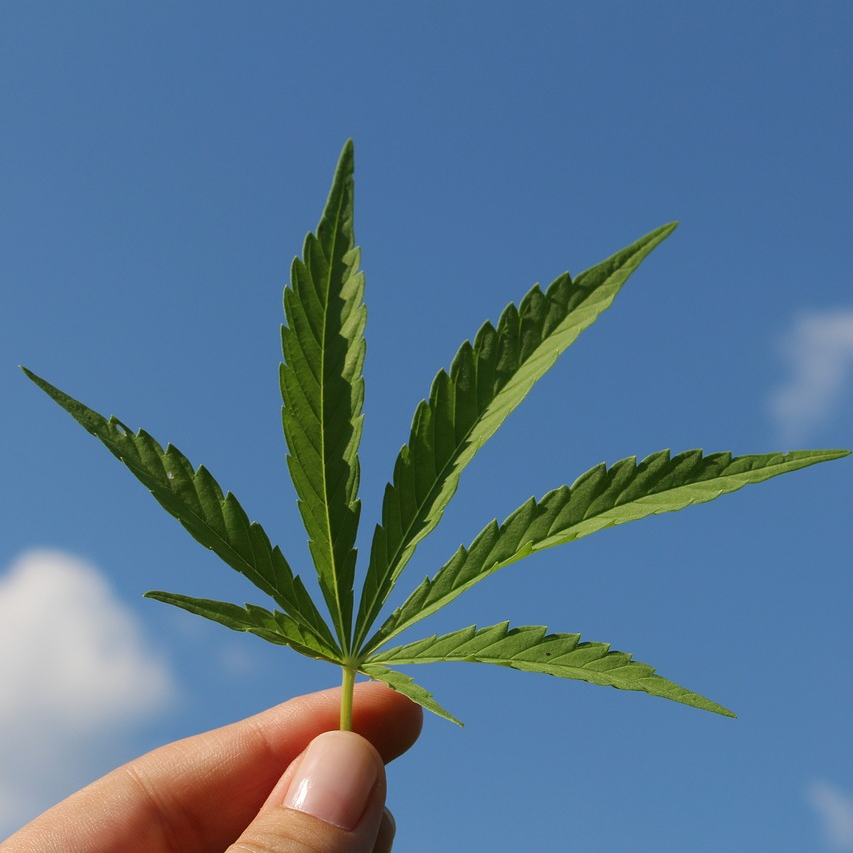
Sativa plants are known for their tall and thin structure, with long branches and narrow leaves. Sativa leaves tend to have more space between each leaflet, giving them a feathery appearance. Sativa strains can reach heights of up to 20 feet or more in some cases, making them ideal for outdoor cultivation in regions with longer growing seasons. Sativa buds are typically less dense and have a looser structure, with longer and thinner buds.
In contrast, Indica plants are generally shorter and bushier, with shorter branches and wider leaves. Indica leaves tend to be broader and thicker compared to Sativa leaves, and the leaflets are often closely spaced. Indica strains are well-suited for indoor cultivation due to their compact size and shorter flowering times. Indica buds are typically denser and have a tighter structure, with shorter and thicker buds.
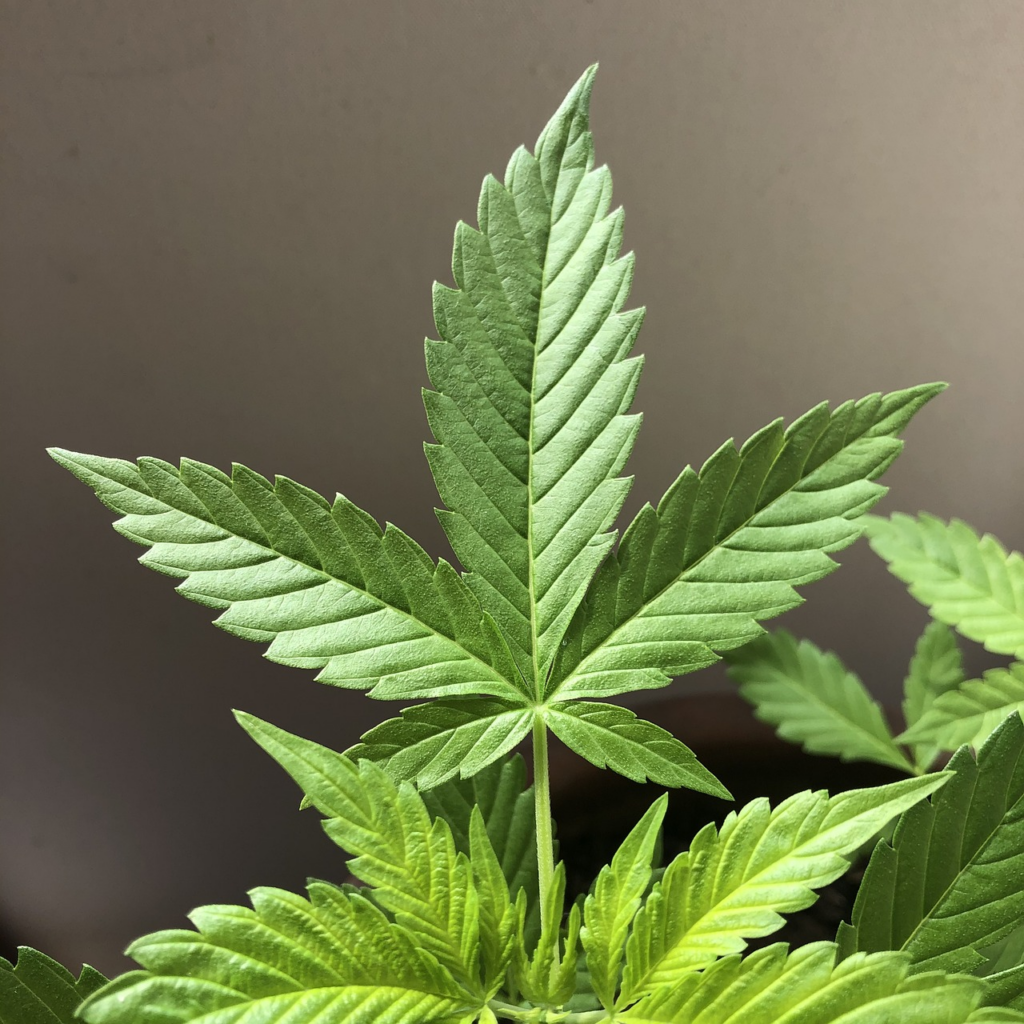
Another factor that can influence the effects of Sativa and Indica strains is the climate in which they are grown. Sativa strains are typically associated with a warm and dry climate, such as those found in tropical regions, while Indica strains are often found in dry and cooler climates.
The distinction between Sativa and Indica strains may not always be clear-cut, as many cannabis strains today are hybrids that exhibit a combination of traits from both subspecies. Consulting reputable sources and conducting genetic testing can provide more accurate information about the genetic makeup of a particular cannabis strain.

The effects and highs produced by Sativa and Indica cannabis strains can vary significantly, offering distinct experiences for users.
Terpene content, or the aromatic compounds found in cannabis plants, can play a significant role in the effects of Sativa and Indica strains.
Sativa strains tend to have higher levels of certain terpenes that can produce a more uplifting and energizing effect, while Indica strains may contain different terpenes that can promote more calming and sedative effects.
When it comes to sativa effects, these strains are often favored for their uplifting and stimulating effects, making them popular for daytime use. Sativa products, such as flower, concentrates, and edibles, are commonly found in marijuana dispensaries and are sought after for their ability to provide increased focus, creativity, and sociability.
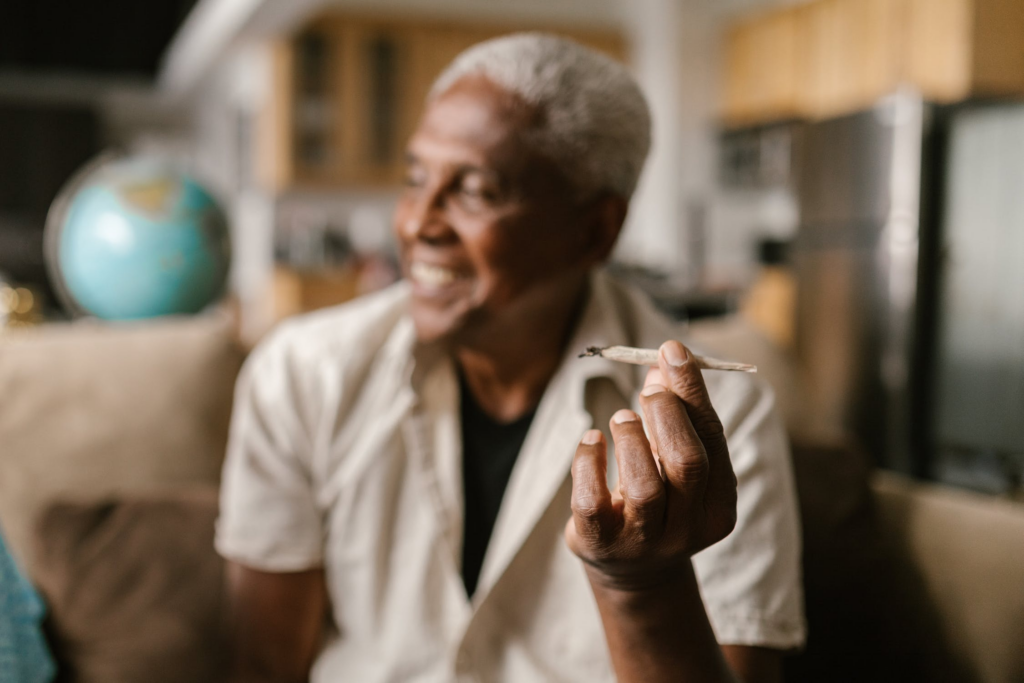
Indica strains are typically associated with calming, relaxing, and sedating effects. They are known to induce deep relaxation, promote sleep, and relieve stress and anxiety. Indica strains are often preferred for evening or nighttime use, or for relaxation and stress relief purposes.
Indica strains are known for their calming effects and are often used for relaxation and stress relief. Indica strains can be beneficial for managing conditions such as muscle pain, insomnia, and anxiety due to their sedative effects. Indica products are also commonly used for promoting appetite and alleviating appetite loss.
It's important to note that the effects of Sativa and Indica strains on the human body can vary depending on individual tolerance, dosage, and other factors. While there is scientific evidence supporting some of the common effects attributed to Sativa and Indica strains, it's also important to consider that the psychoactive effects of cannabis can be subjective and vary from person to person.
Like any substance, cannabis can have potential negative side effects. Sativa strains, known for their intense effects, may not be suitable for everyone and may cause negative effects such as anxiety, paranoia, or increased heart rate. Indica strains, with their sedative effects, may cause drowsiness or impaired coordination in some individuals.
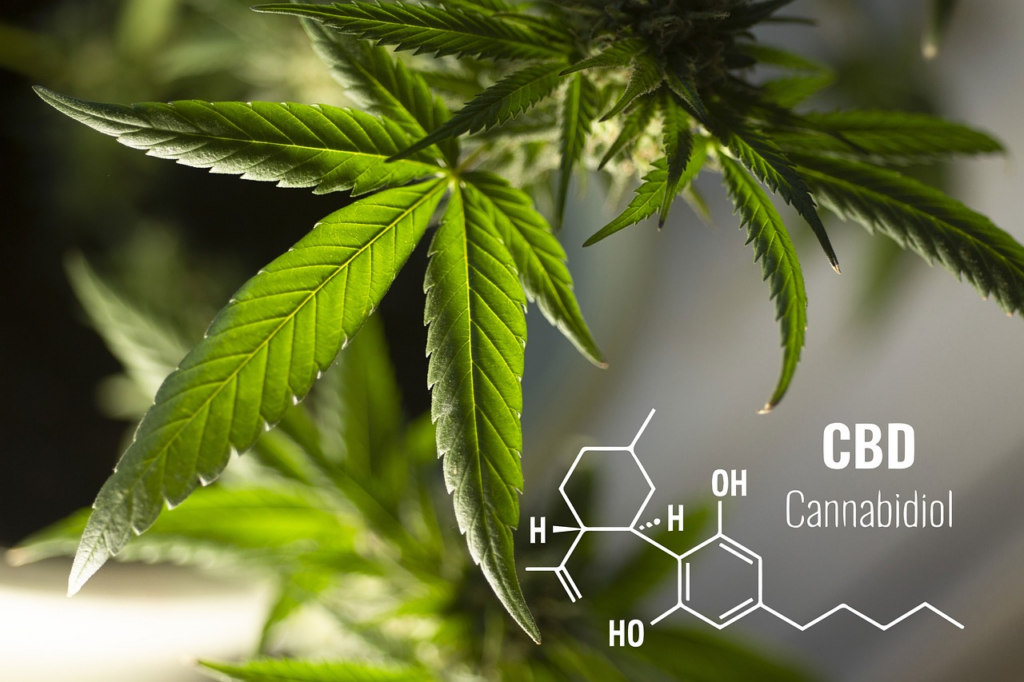
Both Sativa and Indica are known for their therapeutic properties, but they can offer distinct benefits due to their differing characteristics.
Sativa strains are often associated with uplifting and energizing effects, which can make them beneficial for managing conditions such as depression, fatigue, and mood disorders. Sativa strains are also known for their potential to enhance creativity, focus, and sociability, making them suitable for those seeking relief from symptoms of ADHD, PTSD, or social anxiety.
Indica strains are typically associated with calming and relaxing effects, which can make them useful for managing conditions such as anxiety, stress, and insomnia. Indica strains are also known for their potential to provide pain relief, muscle relaxation, and anti-inflammatory effects, making them suitable for those seeking relief from conditions such as chronic pain, muscle spasms, and arthritis.
Furthermore, both Sativa and Indica strains can contain varying levels of cannabinoids and terpenes, which can further influence their therapeutic effects. For example, Sativa strains may be higher in THC, which can provide euphoric effects, while Indica strains may be higher in CBD, which can provide anti-inflammatory and analgesic effects.
The therapeutic benefits of Sativa and Indica strains can vary depending on the individual and their specific health needs. Consulting with a healthcare professional and experimenting with different strains and dosages can help individuals find the strain that best suits their therapeutic needs.
The aroma and flavor profiles of cannabis strains can offer a unique sensory experience, with Sativa and Indica strains often displaying distinct differences.
Sativa strains are known for their uplifting and energetic effects, and their aroma and flavor profiles often reflect this. Sativa strains tend to have a more citrusy, fruity, and sweet aroma, with notes of lemon, pine, and tropical fruits. The flavor profile of Sativa strains can be described as bright, tangy, and refreshing, with hints of citrus, herbs, and spices.
Indica strains are typically associated with calming and relaxing effects, and their aroma and flavor profiles can differ from Sativa strains. Indica strains often have a more earthy, musky, and skunky aroma, with notes of pine, spice, and herbs. The flavor profile of Indica strains can be described as rich, deep, and savory, with hints of earthy, woody, and sweet flavors.
The aroma and flavor profiles of cannabis strains can also be influenced by various factors, including cultivation methods, terpene profiles, and curing processes. Additionally, individual perception and preference for aroma and flavor can vary. Experimenting with different strains and paying attention to the aroma and flavor profiles can add another layer of enjoyment to the cannabis experience for those who appreciate the sensory aspects of cannabis.
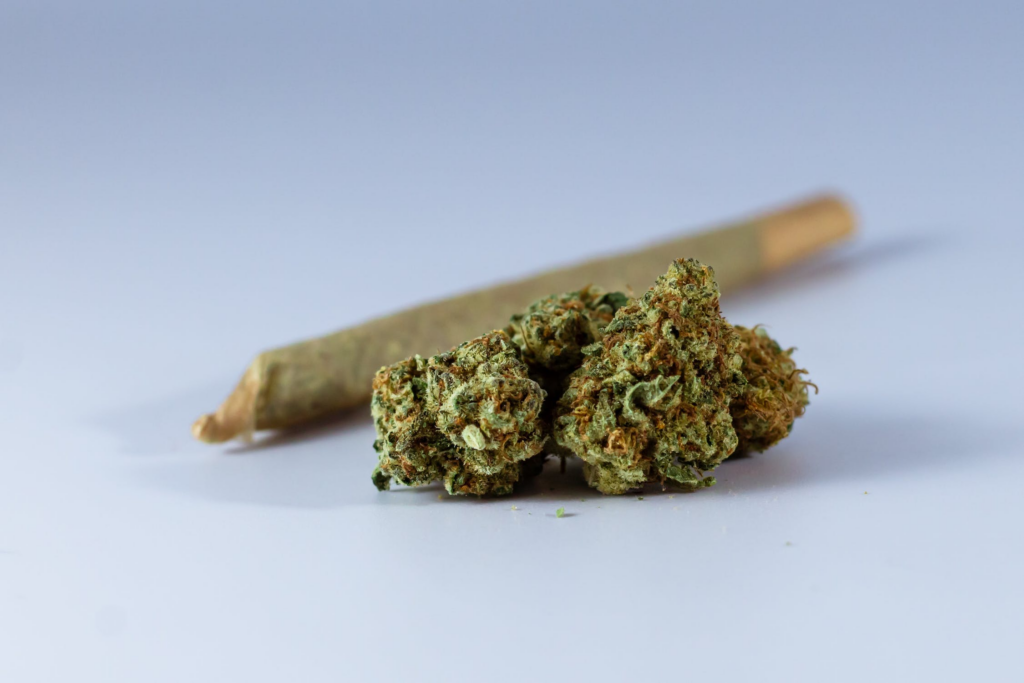
Indica strains such as Bubba Kush are known for their relaxing and sedative effects, making them a popular choice for those seeking relief from muscle pain, anxiety, and insomnia.
Sativa strains like Sour Diesel, Pineapple Express, and Blue Dream are often associated with uplifting and energizing effects, making them sought-after options for those looking for increased creativity, focus, and mood elevation.
Whether you're a fan of the calming effects of Indica or the invigorating effects of Sativa, there are numerous strains to choose from to suit your preferences and needs at marijuana dispensaries. It's essential to do your research and consult with knowledgeable budtenders to find the right strain that aligns with your desired effects and overall experience.
In conclusion, Sativa and Indica strains of cannabis offer distinct effects that can be beneficial for different purposes. The effects of cannabis can vary depending on individual factors and consulting with a healthcare professional or budtender at a marijuana dispensary can provide personalized guidance.
Exploring the history, physical characteristics, effects, and aroma/flavor profiles of Sativa and Indica strains can help you make informed choices when selecting cannabis strains that align with your preferences and health needs. Consulting with a healthcare professional and experimenting with different strains can also aid in finding the right strain for your individual requirements.
If you're looking to experience the diverse world of Sativa and Indica strains, visit DC Collective, a trusted cannabis dispensary. With a wide selection of premium cannabis products, knowledgeable staff, and a commitment to quality, DC Collective is your destination for top-notch cannabis strains and a personalized cannabis experience.
Ready to explore the world of Sativa and Indica strains? Visit DC Collective, your premier cannabis dispensary, to discover a wide selection of high-quality cannabis products. Whether you're a seasoned cannabis enthusiast or new to the world of cannabis, our knowledgeable staff is here to assist you in finding the perfect strain for your needs. Don't miss out on the diverse and unique characteristics of Sativa and Indica cannabis strains - visit DC Collective today!
Microdosing is quickly becoming one of the most popular ways to consume cannabis. But what is microdosing and how do you start if you’re a beginner? We’re answering these questions and more in this cannabis microdosing guide. We’ll explain what microdosing is, why people do it, and how to start, then share some recommendations for easy-to-use microdosing products for beginners.
What is Cannabis Microdosing?
Microdosing is the act of consuming small amounts of cannabis. The idea behind microdosing is that consuming tiny amounts of marijuana can give you the benefits of cannabis while reducing the risk of unwanted side effects. Some people take microdoses of cannabis as needed or desired, while others consume a daily dose like a supplement.
What Counts as a Microdose?
Anything below 10 mg of THC can be considered a microdose, but microdose products typically range from 1 mg to 5 mg of THC per dose.
What’s the Point of Microdosing?
The point of microdosing is to get the beneficial effects of cannabis without experiencing other effects. People may want to avoid feeling strong psychoactive effects or the adverse side effects associated with potent doses of marijuana, such as dry mouth or fatigue.
Microdosing is also a great option for beginner consumers who are new to cannabis. Microdosing offers an excellent entrypoint into using marijuana, as it allows you to easily experiment and find your ideal dose.
What Are the Benefits of Microdosing?
Some research has shown that lower doses of THC may have more benefits when used in lower doses. A 2017 study on the effects of marijuana on mental health found that while THC causes anxiety in high-dose conditions, it decreases anxiety at low-dose conditions. A 2012 study found that cancer patients in clinical settings who took the lowest doses of nabiximols, a THC/CBD compound, had less pain than those who took higher doses. A 2014 study found that low doses of Nabilone, a synthetic form of the active compounds in cannabis, reduced symptoms of PTSD, including insomnia, nightmares, and chronic pain.
Who Uses Low-Dose Cannabis Products?
People microdose for a variety of reasons, so a wide variety of people use low dose cannabis products. We’ve already mentioned that microdosing is popular with beginner cannabis consumers. Then, it’s also popular with medical marijuana patients and a range of more experienced recreational consumers.
Microdosing is common among cannabis patients who use marijuana for medical benefits like pain relief. Consuming small doses of cannabis allows patients to get relief for their condition, while also allowing them to go about their day without experiencing psychoactive or negative effects.
Experienced cannabis consumers sometimes use microdosing as a way to get the benefits of cannabis more regularly or as a way to reset their tolerance. Over time, the body can develop a tolerance to the cannabinoids in cannabis, but microdosing can help heavy smokers reset their system.
It’s worth noting that microdosing has been a very popular trend among workers in certain industries, including creative industries and tech workers in the Silicon Valley community. Some workers consider microdoses of various psychoactive and psychedelic substances to be a tool for productivity, creativity, and general cognitive enhancement. In those communities, it’s popular to microdose with both magic mushrooms and cannabis.
How Do You Microdose Cannabis?
The easiest way to microdose cannabis is by using low-dose cannabis edibles. Microdosing with other methods requires investing in a high quality scale and still having to rely on guesswork. But pre-packaged edible products from a dispensary allow you to easily take the exact mg dose you desire.
How Do You Find Your Optimal Dose?
When you first start microdosing, it’s best to start low and go slow. Anything under the standard dose of THC (10 mg) is considered microdosing, but beginners should usually start much lower than that. A general rule of thumb is to start by taking 2.5 milligrams a day for three days. Then, if you don’t feel your desired effect, go up a couple of milligrams for the next few days. Repeat as needed until you find your ideal normal dose.
Microdosing Products For Beginners
With precisely 2.5 mg of THC in each mint, these refreshing mints are perfect for microdosing beginners.
These low-dose gummies feature indica-like terpenes for a relaxing effect.
For those who want to microdose without having a snack, these THC soft gels are an ideal choice.
Break off a piece of this delicious milk chocolate bar for a customized THC microdose.
Final Thoughts
Need help finding the right microdosing product for you? Stop by one of our dispensary locations or contact us by phone or email.
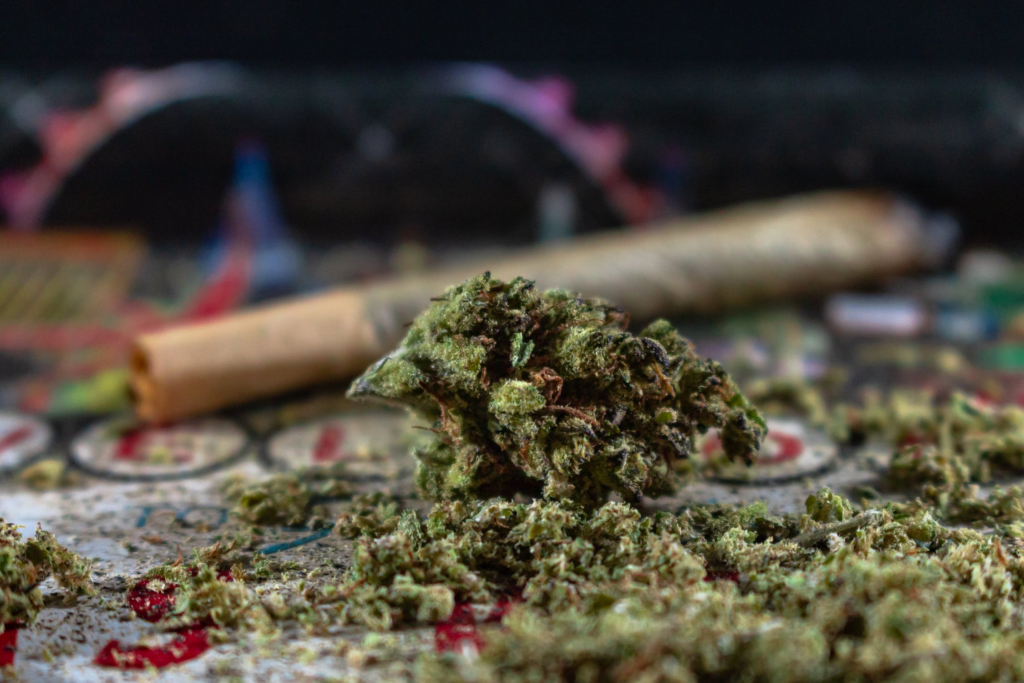
When it comes to cannabis, potency can vary greatly, and understanding how long it lasts can be helpful for ensuring you're getting the most out of your cannabis experience. The potency lifespan of fresh weed depends on various factors, including how it's stored and the conditions it's exposed to. Over time, the potency of weed will naturally decline, and it's important to be aware of this when planning your consumption. This guide will explore the different factors that affect the potency lifespan of weed and provide tips for keeping your cannabis fresh for as long as possible.
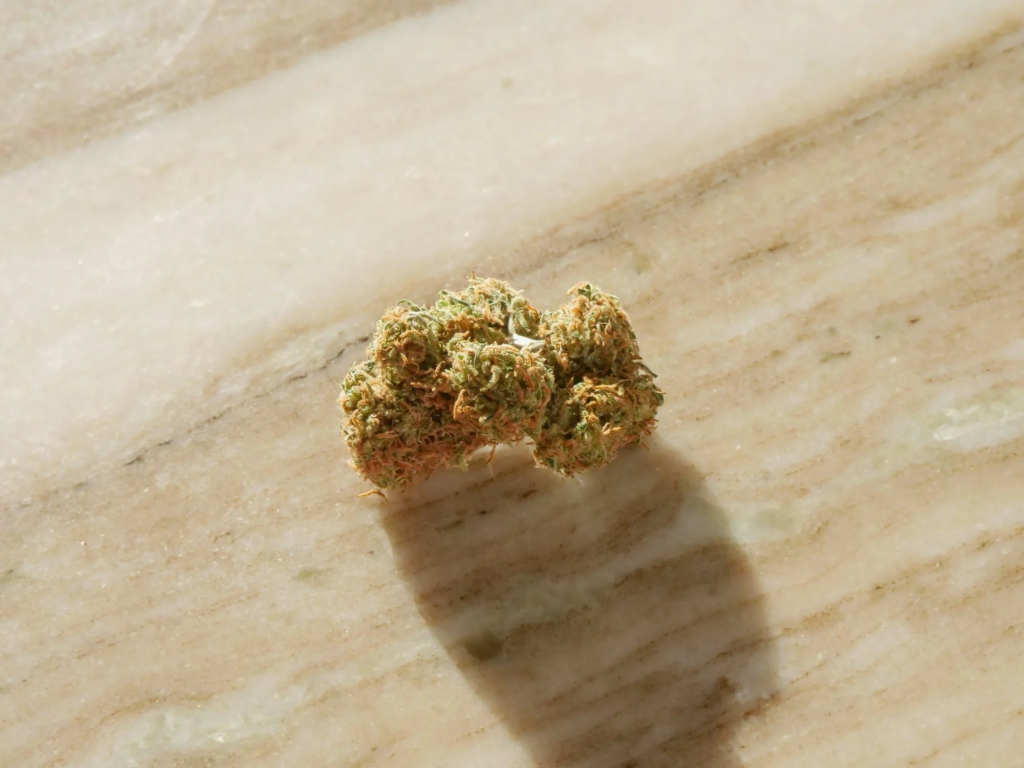
The freshness of weed is essential to ensure its potency and effectiveness. Several factors can affect freshness, including humidity, light, and temperature. Understanding how these factors influence the freshness of weed can help users keep their stash fresh and potent for a longer time.
Proper humidity levels are crucial to keep cannabis flowers fresh. Moldy weed can be a result of too much moisture, while overly dry weed can lead to a loss of potency and flavor. To prevent these issues, it's essential to store weed in an airtight container with controlled humidity levels. Humidity packs can also help maintain the ideal moisture level for your cannabis plants, preserving their quality.
Light exposure is a significant factor that can negatively impact the quality and potency of cannabis flower. When cannabis flowers are exposed to light, the ultraviolet rays in the light can break down the THC molecules, which are responsible for the flower's psychoactive effects. As a result, the potency of the cannabis can decrease significantly.
Therefore, it's crucial to store your cannabis flowers in a dark place, away from direct sunlight. This can help maintain the potency and quality of your cannabis, ensuring you get the desired effects from it. Some effective storage methods include keeping the flower in an airtight container, like a mason jar, in a cool, dry, and dark place.
In addition, homemade edibles can also be affected by light exposure, causing them to lose their potency over time. Therefore, it's important to store cannabis-infused products like edibles in dark conditions to ensure their freshness and potency.
Temperature is another factor that can affect the potency of weed. High temperatures can cause the THC in weed to break down and degrade, leading to a loss of potency. On the other hand, storing weed in a cold environment can also affect its quality, making it dry and brittle. An ideal temperature environment is in a cool, dark place with controlled humidity levels to ensure its freshness and potency over time.
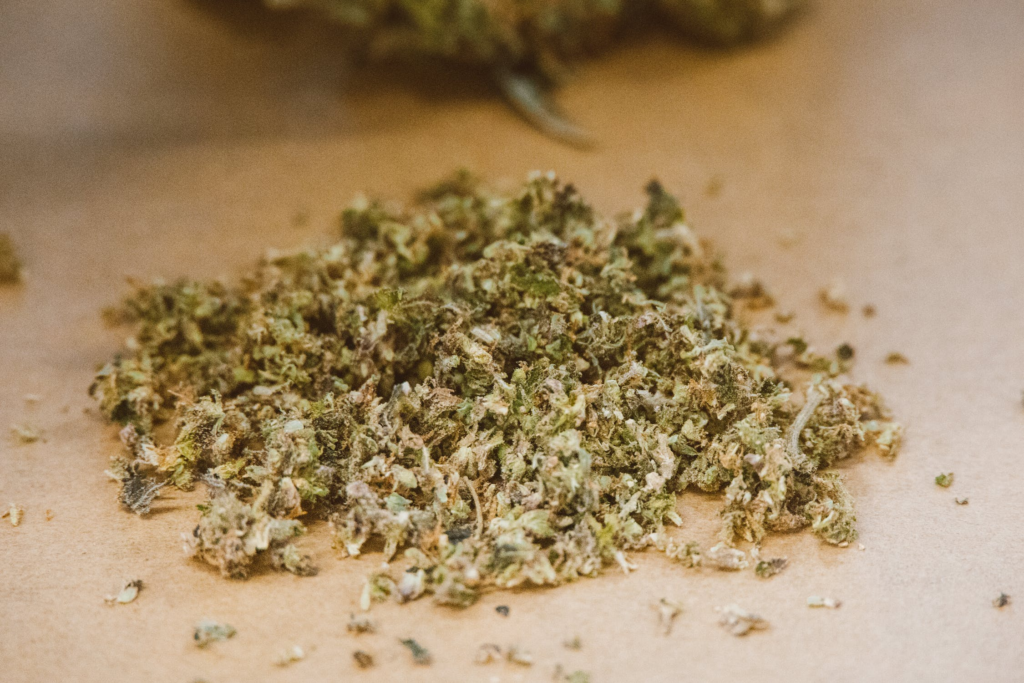
If you are a cannabis user, it is essential to know when your weed has gone stale. There are a few telltale signs that can help you determine the freshness of your cannabis flower. One of the most common indicators is a lack of aroma. Fresh weed has a distinctive aroma that is often earthy, floral, or skunky. However, stale weed may not have any scent, or it may have a musty or moldy odor.
Another sign that your weed has gone stale is a change in its color, texture, or taste. Fresh weed typically has vibrant colors and a sticky, slightly moist texture. In contrast, stale weed may have a dry, brittle texture and appear discolored or disheveled. Moreover, stale weed may taste different than usual or have a reduced flavor profile, indicating a loss of potency.
Aside from changes in aroma, texture, and taste, stale weed may also be harsh on your throat and lungs. Smoking or vaping stale weed can cause discomfort or coughing during use, leading to an unpleasant experience. Therefore, it's crucial to store your weed properly to ensure its freshness and potency.
Using stale weed can have negative effects on both the taste and potency of your cannabis. Stale weed can also be harmful to your health, as it can harbor bacteria and other harmful contaminants. The cannabinoids and terpenes that give cannabis its therapeutic effects can break down over time, resulting in a less effective product.
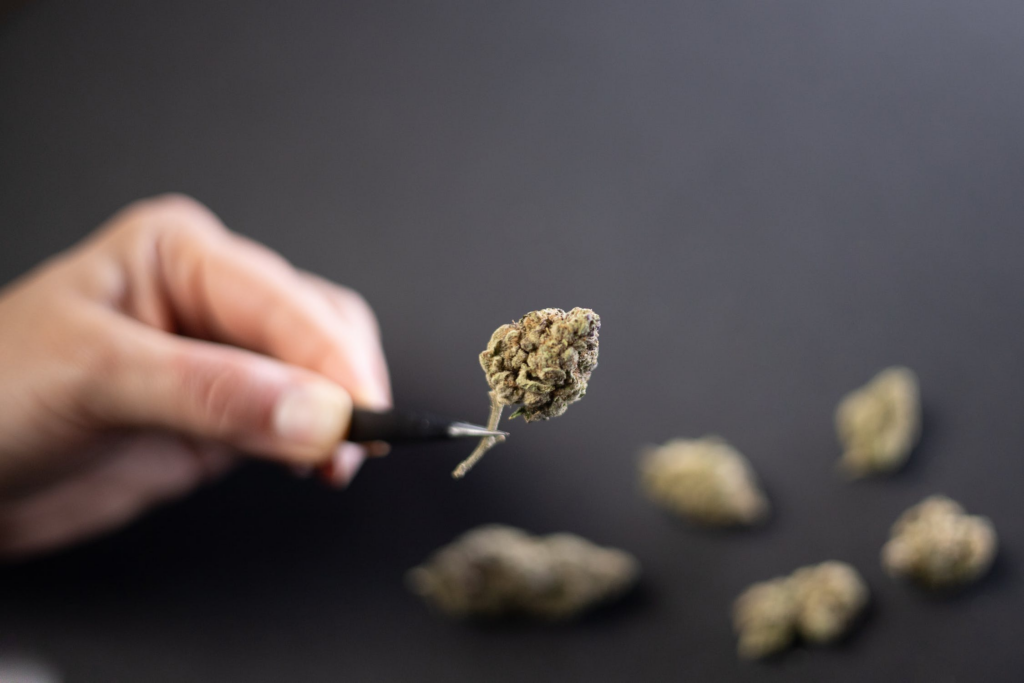
Storing your weed properly is crucial to maintain its freshness and potency. Plastic baggies are not ideal for long-term cannabis storage as they don't provide enough protection from exposure to air, light, and moisture. Instead, use an airtight glass jar or a mason jar to keep your cannabis buds fresh. Check your weed regularly for signs of mold, discoloration, or dark spots. Proper storage and care of your cannabis products can ensure the longevity of your stash, whether it be for homemade edibles or for smoking. And remember, proper cannabis education is essential for every cannabis user to know how to store and maintain their cannabis products properly.
Humidity packs are a popular way to ensure the proper humidity levels are maintained in storage containers. Exposure to light, especially direct light, can also have a negative impact on weed quality, leading to the development of dark spots and discolored areas. Plastic baggies are not ideal for long-term storage of weed as they can allow for exposure to air and fluctuations in temperature, including cold temperatures that can dry out the flower and reduce its shelf life.
To keep your cannabis products fresh, it's important to use proper storage methods. Ground weed can dry out faster than whole buds, so it's best to store it in an airtight glass container. Mason jars are a popular choice, as they can be stored in a dark space to minimize light exposure. Additionally, it's important to regularly inspect your cannabis stash for signs of mold growth or discolored spots, and to remove any bad weed to prevent contamination of the rest of your cannabis.
Different types of edibles also require specific storage conditions. For example, weed gummies should be kept in a cool, dry place, away from direct light and humidity, to maintain their texture and potency. Proper care and storage are major factors in ensuring that your cannabis remains fresh and potent, regardless of the cannabis strain or form it comes in.
In conclusion, understanding the factors that affect the freshness and potency of cannabis is crucial for every cannabis user. Proper storage in an airtight container, away from direct light and with controlled humidity levels, can help preserve the potency and freshness of cannabis flowers and products for an extended period.
By following the tips and tricks mentioned in this blog, cannabis users can ensure they're getting the most out of their stash. Proper cannabis education is also key to maximizing the benefits of this versatile plant.
At DC Collective, we are committed to providing high-quality cannabis products to our customers. If you're in the Los Angeles area, visit our dispensary or check out our online shop for a wide selection of premium cannabis strains, edibles, concentrates, and more. Our knowledgeable budtenders can help you find the right cannabis strain and products that suit your needs.

Cannabis flower is available in various quantities, ranging from small measurements like grams of cannabis to a full ounce of cannabis. Understanding the different measurements is crucial when it comes to purchasing cannabis flower. This complete guide to cannabis flower is designed to provide an overview of the different measurements available and offer tips for checking the quality and prices of cannabis products.
This complete guide to cannabis flower not only covers the different measurements available but also delves into the potential health benefits and risks associated with cannabis use. Cannabis has been studied for its potential therapeutic effects on various medical conditions, such as chronic pain, anxiety, and epilepsy. It's important to note that while cannabis may have potential benefits, there are also potential risks and adverse effects to consider.
Additionally, this guide provides valuable information on the various cannabis strains and their effects. With so many strains available in the market, it's essential to understand the different characteristics and effects of each strain. By knowing this information, you can choose the strain that best suits your needs and preferences. Whether you're looking for a strain to help with anxiety or one to boost creativity, this guide has got you covered.
Whether you're a seasoned cannabis user or a novice, this complete guide to cannabis flower will provide you with the information and guidance you need to make informed decisions when purchasing cannabis products. By understanding the different measurements, quality, prices, and strains available, you can ensure that you're getting the best possible experience from this versatile and potentially therapeutic plant.

A gram of weed is the smallest and most common unit of measurement in the cannabis industry. It's a convenient and cost-effective way to try out new strains or to use for personal consumption. While it may seem like a small amount, a gram of weed can provide a satisfying experience and is an excellent starting point for those new to cannabis.
One of the benefits of a gram of cannabis is that it allows you to try out different strains without committing to a larger purchase. With the abundance of strains available in the market, a gram of weed can help you explore and experiment with various strains to find the one that suits your preferences and needs the best.
Moreover, a gram of cannabis can typically fill up one or two small bowls, making it perfect for personal consumption. It's an ideal amount for those who prefer to consume cannabis in small doses or who want to keep their tolerance level in check. Additionally, a gram of weed can be used in a variety of consumption methods, including smoking, vaping, or even cooking.
However, it's important to note that the effects of a gram of weed may vary depending on the strain and the individual's tolerance level. Some strains may have a higher THC content, leading to a more potent experience, while others may have a lower THC content, resulting in a milder experience. It's essential to understand the potency of the strain you're purchasing and to consume responsibly to avoid any adverse effects.
An eighth of weed, also known as a "slice," is a common unit of measurement in the cannabis industry, equivalent to 3.5 grams. It's a popular choice for recreational use and is ideal for those who want to stock up on a moderate amount of cannabis without committing to a larger purchase.
An eighth of weed is typically enough to last for a few sessions, depending on how much you consume. It's an excellent option for those who enjoy smoking or vaping with friends or prefer to use larger amounts of cannabis per session. Moreover, an eighth of weed can be used in various consumption methods, including rolling joints, packing bowls, or even making edibles.
Aside from recreational use, an eighth of weed can also be used for medicinal purposes. Many medical cannabis patients use this measurement to manage their symptoms and improve their quality of life. For example, an eighth of weed can provide relief for those experiencing chronic pain, anxiety, or insomnia.
A quarter of weed, also known as a "quad," is an excellent measurement for those who enjoy sharing their cannabis experience with friends or use weed regularly. It's equivalent to 7 grams, making it a cost-effective way to purchase larger quantities of weed without committing to an entire ounce.
A quarter of weed is ideal for those who enjoy smoking or vaping larger amounts of cannabis in one session. It's also a great option for those who prefer to have a steady supply of cannabis on hand for their personal use. It can typically provide between 14 to 28 sessions, depending on how much you use per session.
One of the advantages of purchasing a quarter of weed is that it often comes at a lower price per gram than in smaller quantities. This makes it a great option for those who use cannabis regularly and want to save money on their purchases. Additionally, buying a quarter of weed can be more convenient than buying smaller amounts as it reduces the need for frequent trips to a dispensary or delivery service.
It's important to note that different strains of cannabis may have different potencies and effects. It's essential to check the quality and prices of the product before making a purchase to ensure that you're getting the best value for your money.
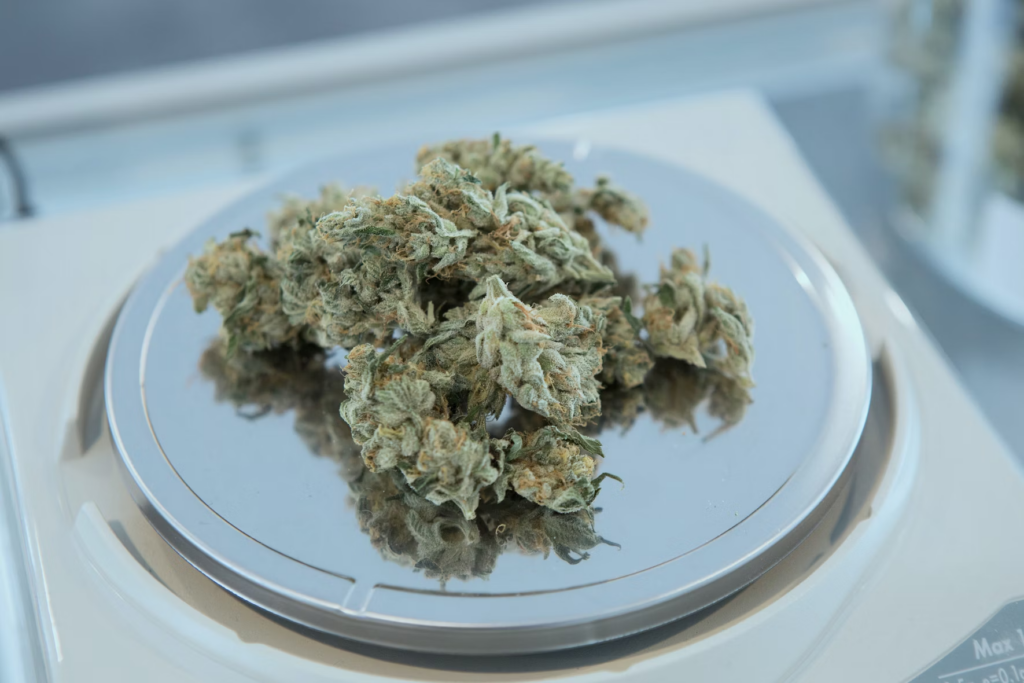
A half of weed, also known as a "half-ounce," is a significant amount of cannabis that can provide a steady supply for those who use weed regularly or for parties and events. It's equivalent to 14 grams, making it a more cost-effective way to purchase larger quantities of weed than buying smaller amounts.
For those who use cannabis regularly, a half of weed can last for several weeks or even months, depending on how much they use per session. It's a great way to save money on cannabis purchases in the long run by buying in bulk. Additionally, it reduces the need for frequent trips to a dispensary or delivery service, making it a convenient option for those who want to stock up on cannabis.
A half of weed is also an ideal measurement for parties or events where multiple people will be using cannabis. It provides enough cannabis to share with friends and can make for a memorable experience. However, it's important to note that sharing cannabis is not legal in all states and it's essential to check the local laws before doing so.
It's crucial to check the quality and prices of the product before making a purchase to ensure that you're getting the best value for your money. Different strains of cannabis may have different potencies and effects, so it's important to choose the right one for your needs.
An ounce of cannabis is a significant amount of cannabis and is equivalent to 28 grams. It's a measurement that's commonly used by dispensaries and cannabis businesses that operate on a larger scale. An ounce of weed can last for a considerable amount of time, making it a cost-effective option for those who use cannabis regularly or for medical purposes.
Purchasing an ounce of weed can also be a convenient option for those who don't want to make frequent trips to a dispensary or delivery service. However, it's essential to check the quality and prices of the product before making a purchase to ensure that you're getting the best value for your money. Different strains of cannabis may have different potencies and effects, so it's important to choose the right one for your needs.
On an even larger scale, a pound of weed is equivalent to 16 ounces or 448 grams. This measurement is typically used by larger cannabis businesses or operations that require large quantities of cannabis for production purposes. It's not a measurement that's commonly used by individual users or for personal consumption, but it's an important unit of measurement within the cannabis industry.
Whether you're purchasing an ounce of weed or a pound of weed, it's important to understand the potential health benefits and risks associated with cannabis use. While cannabis can be a valuable tool for managing medical conditions, it can also have adverse effects if not used responsibly. It's essential to consult with a healthcare professional before using cannabis to treat a medical condition and to be aware of the potential risks.
In conclusion, an ounce of weed and a pound of weed are two important units of measurement within the cannabis industry. They're typically used by dispensaries, larger cannabis businesses, or operations that require large quantities of cannabis for production purposes. While purchasing in bulk can be a cost-effective option, it's important to check the quality and prices of the product before making a purchase to ensure that you're getting the best value for your money.

When it comes to purchasing cannabis products, it can be helpful to consult with a budtender. These individuals are typically employed by dispensaries and have extensive knowledge about different strains of weed, as well as their effects and potential medicinal benefits. They can help you navigate the sometimes overwhelming variety of cannabis products available and assist you in selecting the right measurement for your needs.
Budtenders can be especially helpful when it comes to selecting the appropriate strain of cannabis for a particular medical condition. For example, certain strains of cannabis may be more effective in treating chronic pain, anxiety, or depression. A budtender can guide you through the process of selecting the right strain for your particular needs, as well as help you determine the appropriate measurement.

Checking the label is especially important if you're purchasing cannabis products for medical purposes, as the right dosage can be critical for treating certain conditions. It's important to make sure that you're getting the correct amount of cannabis so that you can achieve the desired effects and experience the potential medicinal benefits.
In addition to ensuring that you're getting the right measurement, checking the label can also help you compare prices and make informed purchasing decisions. By knowing the exact amount of weed in a particular product, you can calculate the price per gram or ounce and compare it to other products or dispensaries.
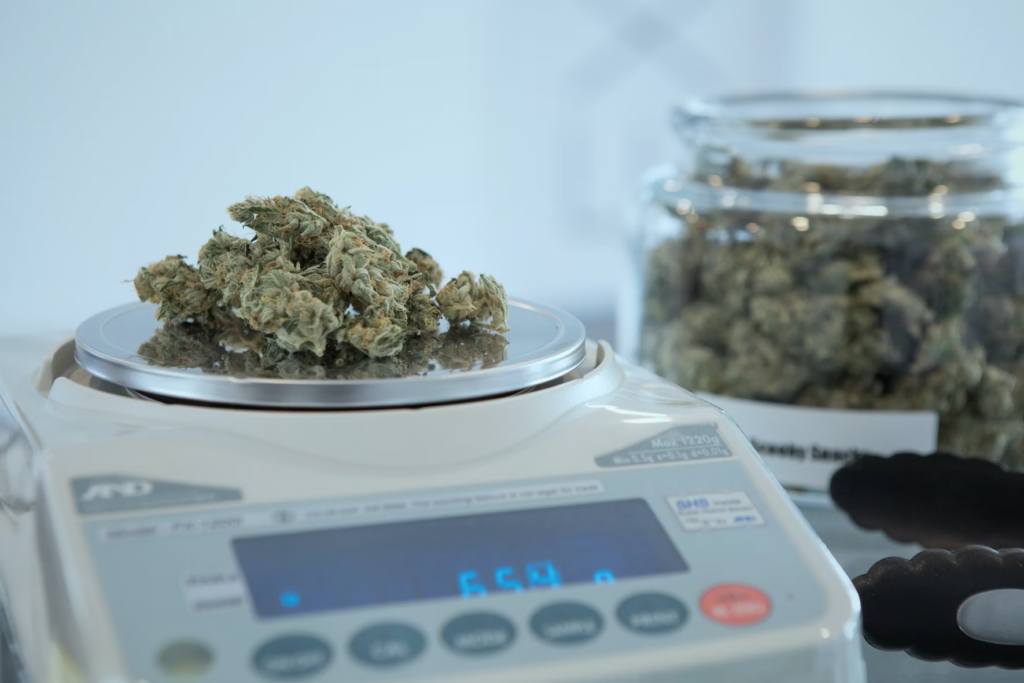
If you're looking to ensure that you're getting the right measurement of weed, investing in a scale can be a wise choice. While most dispensaries label their products with the correct measurements, it's always a good idea to double-check to make sure you're getting what you paid for.
Using a digital scale is an easy and accurate way to weigh your weed. It's important to note that not all scales are created equal, and some may be more precise than others. Look for a scale that measures to at least one decimal point, such as 0.1 grams, to ensure that you're getting an accurate reading.
A scale can also help you manage your usage and avoid overconsumption, which can lead to adverse effects. By weighing out the right amount of weed, you can ensure that you're consuming a consistent dosage and avoid accidentally consuming too much.
Additionally, a scale can be a helpful tool for those who use cannabis for medical purposes. For example, if you're using cannabis to manage a specific medical condition, it may be important to consume a precise amount of cannabis to achieve the desired effects.
Overall, investing in a scale is a small but important step in ensuring that you're getting the right measurement of weed and consuming cannabis safely and responsibly.
If you're considering using cannabis for a medical condition, it's important to be aware of potential adverse effects and to consult with a healthcare provider before trying any treatments. However, research suggests that cannabis may have therapeutic potential for a range of conditions, from chronic pain to epilepsy to anxiety.
While some studies have shown that cannabis use may be associated with increased risk for certain diseases and conditions, other research suggests that it may have therapeutic potential for treating certain symptoms and improving quality of life. However, it's important to be aware of the potential adverse effects of cannabis use, such as impaired cognitive function and respiratory problems.
Weed measurements are an important part of purchasing and consuming marijuana. Whether you're a recreational user or using it for medical purposes, it's important to understand the different measurements and how to check them. By following these tips, you can make sure you're getting the right amount of weed and getting the most out of your purchase.
If you're interested in purchasing cannabis products, DC Collective is a reputable online service that offers convenient delivery options. It's important to ensure that you're getting the correct measurements and strains for your needs, and DC Collective can provide you with the right information and guidance to make informed decisions. With the potential therapeutic benefits of cannabis, including managing medical conditions and improving overall health and well-being, it's essential to purchase from a trustworthy source like DC Collective to ensure the highest quality and safety standards.
Chronic pain is a common symptom experienced by millions of people around the world. It can affect daily life and lead to decreased quality of life. However, medical cannabis may offer potential benefits for chronic pain patients. Cananabis-based medicines contain active compounds, such as THC and CBD, that interact with the body's cannabinoid receptors, which may help reduce pain severity and improve other symptoms. In this blog, we will explore the potential benefits of THC and CBD for chronic pain management, the medical conditions that cannabis-derived products may help with, and the adverse effects and legal concerns surrounding their use. We will also discuss the different forms of medicinal cannabis available, the starting dose, and the daily dose of THC and CBD ratio for pain relief.

THC and CBD are both cannabinoids found in cannabis plants, and they have gained a lot of attention for their potential therapeutic benefits, particularly for pain relief. Both compounds interact with the endocannabinoid system (ECS) in the human body, which is responsible for regulating various functions such as pain, inflammation, and immune response.
THC is known for its psychoactive effects, and it has been found to offer pain relief by binding to CB1 receptors in the brain and nervous system. When THC binds to these receptors, it can produce feelings of euphoria or relaxation, which can help alleviate body pain symptoms. This mechanism of action makes THC particularly useful for pain caused by conditions such as neuropathic pain, which can be difficult to manage with traditional pain medications.
CBD, on the other hand, may offer pain relief by interacting with the TRPV1 receptor, which is involved in pain signaling. This receptor plays a crucial role in the perception of pain and inflammation, and when CBD interacts with it, it can help reduce pain and inflammation. CBD has also been found to have anti-inflammatory properties, which can be particularly useful in managing pain caused by conditions such as people with arthritis.
Another important aspect of THC and CBD for pain relief is their different ratios and doses. The right combination of THC and CBD, as well as the right dosage, can have a significant impact on the effectiveness of pain relief. Additionally, the way that THC and CBD are consumed can also have an impact on their pain-relieving properties. For example, smoking or vaporizing cannabis may produce more immediate effects, while ingesting cannabis-based products may produce longer-lasting effects.
It's important to note that while THC and CBD have shown promise for pain relief, more research is needed to fully understand their mechanisms of action and potential benefits. Additionally, cannabis-based medicines may not be suitable for everyone and may have adverse effects, particularly when used in high doses or with other medications such as blood thinners.
Overall, the potential benefits of THC and CBD for chronic pain management are promising, and many medical professionals see them as a potential alternative to opioids. However, it's important to consult with a healthcare provider before using cannabis-based products for body pain relief and to carefully consider the potential benefits and risks.

Cannabidiol (CBD) has been gaining attention in recent years for its potential therapeutic effects on various health conditions, including chronic pain. Several studies have suggested that CBD may help reduce pain and inflammation by interacting with the body's endocannabinoid system and other receptors, such as the serotonin and vanilloid receptors.
One study published in the European Journal of Pain found that CBD applied topically to the skin could help reduce pain and inflammation associated with arthritis. Another study published in the Journal of Experimental Medicine suggested that CBD may help reduce chronic pain and neuropathic pain by targeting the alpha-3 glycine receptors.
CBD may also be effective in managing symptoms of multiple sclerosis and fibromyalgia, which are two conditions that are known to cause chronic pain. In a study published in the Journal of Clinical Pharmacy and Therapeutics, researchers found that CBD reduced pain and spasticity in people with multiple sclerosis. In another study published in the Journal of Pain Research, researchers found that CBD may improve the quality of life in people with fibromyalgia.
While these studies provide promising results, more research is needed to fully understand the potential therapeutic effects of CBD on chronic pain and related conditions. It's also important to note that CBD may interact with certain medications, such as blood thinners, and should be used with caution. As always, it's best to consult with a healthcare professional before using CBD or other cannabis-based medicines for chronic pain management.

CBD has emerged as a potential alternative treatment for chronic pain, particularly in cases where conventional pain management methods are ineffective or have adverse side effects. Studies have shown that CBD may help reduce pain and inflammation by interacting with various receptors in the body, including the endocannabinoid system, which is involved in regulating pain and inflammation.
Research has also shown that CBD may be effective in managing pain associated with conditions such as multiple sclerosis and fibromyalgia. For instance, a study published in the Journal of Clinical Pharmacy and Therapeutics found that CBD, when combined with THC, could significantly reduce pain intensity and improve sleep quality in patients with multiple sclerosis. Similarly, a review of existing literature found that CBD may be beneficial in managing pain and improving quality of life in patients with fibromyalgia.
Overall, while more research is needed to fully understand the therapeutic potential of CBD for chronic pain, the existing evidence suggests that it may be a promising option for those seeking alternative forms of pain management.

When it comes to choosing between THC and CBD for pain relief, it's important to consider your individual preferences and needs. Both compounds interact with the endocannabinoid system in the body, which can help regulate pain and inflammation. However, THC is known for its psychoactive effects, which can cause altered perception and mood changes, making it less tolerable for some individuals. On the other hand, CBD is non-intoxicating and may be more suitable for individuals who want to avoid psychoactive effects or who have conditions that cause inflammation.
It's also important to note that THC may be more effective for certain types of pain, such as nerve pain. In a clinical study, patients with neuropathic pain who used cannabis-based medicines containing THC experienced significant improvement in pain severity compared to those who used a placebo. However, the study also reported adverse effects, such as dizziness and drowsiness.
CBD, on the other hand, has been studied for its potential therapeutic effects on various pain conditions, including multiple sclerosis and fibromyalgia. Some human studies have reported moderate improvements in pain symptoms with the use of CBD oil for pain management. Additionally, CBD has been investigated as an alternative to opioids for chronic pain management, with some research suggesting that it may have fewer adverse effects and lower risk of addiction compared to opioids.
Ultimately, the choice between THC and CBD for pain relief should be made in consultation with a healthcare professional, taking into account the potential beneficial effects and adverse effects of each compound, as well as any legal concerns and individual medical conditions.
Both THC and CBD may cause side effects, such as dry mouth, dizziness, and changes in appetite. THC may also cause psychoactive effects, such as altered perception and mood changes. It's important to consult with a healthcare provider before using cannabis products for pain relief. Additionally, the legality of cannabis products may vary depending on the state or country.

When it comes to choosing a THC or CBD product for pain relief, it's important to consider your individual needs and preferences. There are a wide variety of products available, each with their own unique benefits and drawbacks. For example, THC may be more effective for certain types of pain, such as nerve pain, but it can also cause psychoactive effects that some individuals may not tolerate. On the other hand, CBD may be more suitable for individuals who want to avoid psychoactive effects or who have conditions that cause inflammation.
It's also important to consider the form of the product. Tinctures, topicals, and edibles are just a few of the many options available. Topical CBD products may be more suitable for localized pain, while edibles may be more convenient for individuals who want a long-lasting effect.
Ultimately, the choice of THC or CBD product will depend on your specific needs and preferences. It's always a good idea to consult with a healthcare provider to determine the best course of action for managing your chronic pain.
In conclusion, the potential therapeutic effects of THC and CBD for chronic pain have been extensively studied and show promise in providing relief for individuals suffering from this debilitating condition. However, it's crucial to approach the use of cannabis products with caution and responsibility. It's essential to consult with a healthcare provider before trying any cannabis product, and choosing the right product that suits your needs and preferences is also important.
Furthermore, it's important to be mindful of the potential side effects associated with the use of medical cannabis products, such as drowsiness, dry mouth, and impaired cognitive function. It's also crucial to be aware of the legal status of cannabis products in your region and ensure that you are purchasing products from reputable sources.
If you're interested in exploring the potential benefits of cannabis products for pain relief, we encourage you to visit DC Collective, a trusted and reputable dispensary that offers a wide range of high-quality cannabis products. Their knowledgeable staff can help guide you in selecting the right product to suit your needs and answer any questions you may have. Take the first step towards finding relief today by visiting DC Collective.
Bongs are a popular smoking accessory because they can provide a smoother smoking experience compared to other methods. When using a bong, smoke is filtered through water, which can help cool it down and remove some of the harshness. Additionally, the smoke may pass through percolators or diffusers, which further break it up and make it easier to inhale. Using a bong can also help conserve your herbs or tobacco, as you can take bigger hits with less effort.

Bongs are a popular method of smoking due to their ability to provide a smooth, cool hit that is easy on the lungs. There are numerous types of bongs to choose from, each with its own distinct advantages. Glass bongs, for example, offer a clear view of the smoke and are easy to clean. On the other hand, acrylic and silicone bongs are more durable and resistant to breaking, making them a great option for those who are constantly on-the-go.
When selecting a bong, it is important to keep in mind factors such as size, material, and price. Consider the environment in which you plan to use your bong and choose a material that is appropriate for your lifestyle. Additionally, the size of the bong may affect the smoothness of the hit, so make sure to select a size that fits your preferences. Lastly, keep your budget in mind and choose a bong that fits your price range. By taking these factors into consideration, you can find a bong that is perfect for your needs and preferences.
Before you start smoking, it's important to properly set up your bong. Start by filling it with hot water (or warm water, depending on your preference). Then, add in coarse salt and shake it to help loosen any resin buildup. Rinse the bong pieces with clean water and assemble them. Fill the bong bowl with your preferred herbs or tobacco and light it. Remember to inhale slowly and deeply, and exhale smoothly.

When smoking with a bong, it's important to inhale and exhale properly to get the most out of your smoke session. Start by inhaling slowly and deeply, filling your lungs with smoke. Hold it in for a few seconds before exhaling smoothly. Repeat as desired. Remember to take breaks and hydrate between hits to avoid getting too high.
Cleaning your bong regularly is crucial to keep it functioning properly and avoid any unpleasant smells or tastes that can ruin your smoking experience. If you have a glass bong, you can start by rinsing the bong pieces with hot water to remove any loose debris. For plastic or acrylic bongs, warm water can be used instead to avoid damaging the material.
Once the bong pieces are rinsed, you can add coarse salt and rubbing alcohol to the bong, filling it about halfway. Shake the bong vigorously to help loosen any resin build-up. You can also use a brush or pipe cleaner to scrub away any stubborn stains. Let the bong sit for a few minutes, then pour out the dirty bong water and rinse everything with clean water.
Don't forget to clean your bong bowl and downstem as well, as these pieces can become clogged with resin over time. You can soak them in rubbing alcohol and salt, or use a pipe cleaner to remove any debris. Once everything is clean, let it air dry before using it again. By keeping your bong clean, you can enjoy a smooth, flavorful smoking experience every time.

While using a bong can be a fun and enjoyable experience, it's important to use it safely and responsibly. Always use fresh water and avoid using dirty water or dirty bong pieces. Make sure to only smoke in a well-ventilated area and avoid sharing your bong with others to prevent the spread of germs. Remember to stay hydrated and take breaks as needed.
In conclusion, smoking with a bong can be a fun and enjoyable experience, but it's important to use it safely and maintain it properly. By choosing the right bong, setting it up correctly, smoking with proper technique, and cleaning it regularly, you can ensure a smooth and pleasant smoke session every time.
If you're in the Los Angeles area and looking for high-quality bongs or smoking accessories, visit DC Collective in Van Nuys. Our knowledgeable staff can help you find the perfect product to suit your needs and preferences. And if you're new to smoking, we can provide you with tips and advice on how to get started.
Remember to always smoke responsibly and in accordance with local laws and regulations. We hope this guide has been helpful in teaching you how to properly set up, smoke, and clean your bong. Happy smoking!
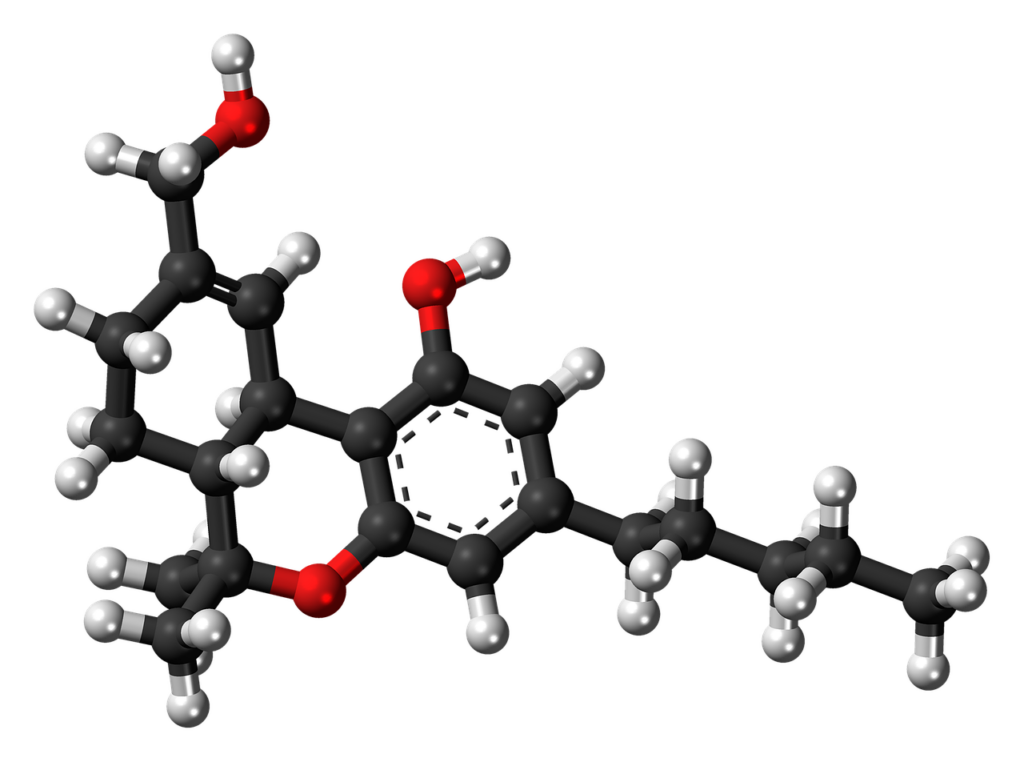
THC, also known as tetrahydrocannabinol, is the most well-known and most abundant psychoactive compound found in the cannabis plant. THC is responsible for producing the euphoric and psychoactive effects commonly associated with marijuana use. Its chemical structure is similar to the endocannabinoids produced naturally by the human body, which are involved in regulating a variety of physiological processes.
Since its discovery in the 1960s, THC has been the subject of extensive research, particularly in the areas of medicinal and therapeutic use. It has been found to have a wide range of potential medical applications, including pain relief, nausea and vomiting reduction, appetite stimulation, and reduction of muscle spasms in patients with multiple sclerosis.
THC is just one of many cannabinoids found in the cannabis plant that can have a range of effects on the body and mind. While it can offer therapeutic benefits for those with chronic pain and certain medical conditions, it can also have adverse health effects, particularly when used in excess or by those who are sensitive to its effects.
The legal status of THC-containing products varies greatly by jurisdiction. While some countries and states have legalized both medical and recreational use of marijuana, others have strict laws prohibiting its use or only allow it for medical purposes with a prescription. It is important to research and understand the laws in your area before using any THC-containing products.
Read on to learn about what exactly THC is as well as the different types that exist and their individual benefits.
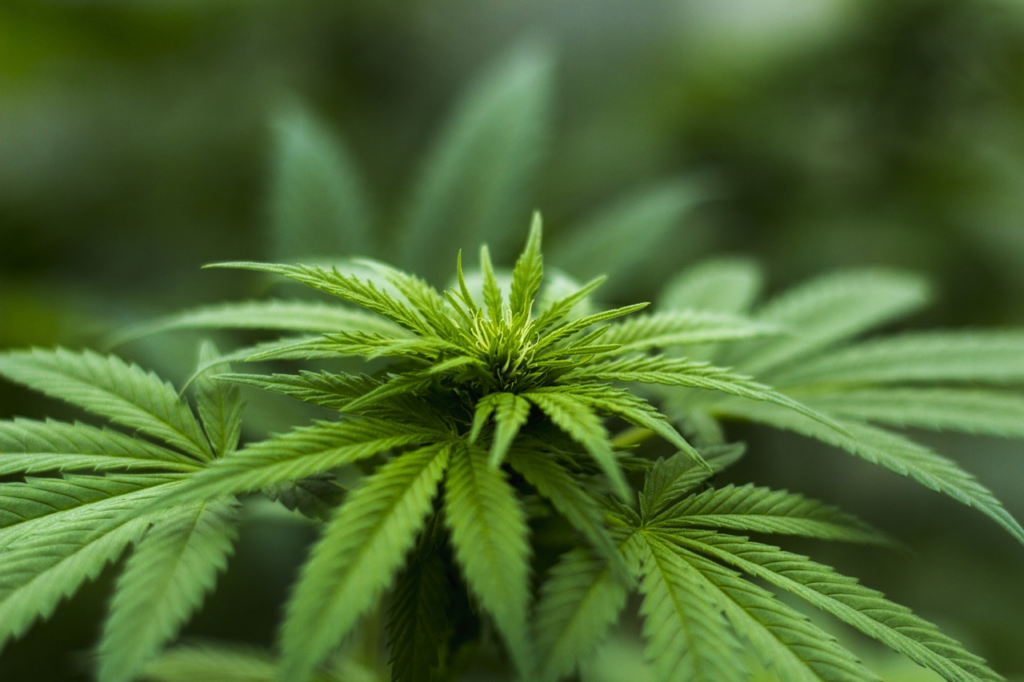
The cannabis plant is known for containing a diverse array of chemical compounds, including cannabinoids. These compounds interact with the body's endocannabinoid system, producing various physiological effects. THC is one such cannabinoid, and it has been the subject of extensive research due to its psychoactive properties.
People often consume THC through smoking or vaporizing cannabis, as well as ingesting cannabis-infused products like edibles or tinctures. The effects of THC on the body can vary depending on several factors, including the method of consumption, dosage, and individual tolerance.
It is important to note that while THC can offer therapeutic benefits, it can also pose risks, particularly when used in excess or by individuals who are sensitive to its effects. As such, the legal status of THC-containing products varies by jurisdiction, with some areas legalizing both medical and recreational use, while others maintain strict prohibitions.

The effects of cannabis can vary widely depending on factors such as dosage, method of consumption, and individual tolerance. It is important to be aware of the potential adverse events related to THC use, particularly in cases of cannabis use disorder or when consumed in excess.
Medical cannabis laws in some jurisdictions allow for the use of cannabis-derived products containing THC to treat conditions such as neuropathic pain and abdominal pain. However, it is important for healthcare providers to be aware of the potential adverse effects of THC and to monitor their patients accordingly.
However, it is important to note that excessive use or misuse of THC can lead to negative outcomes. Those with cannabis use disorder or those who consume THC in excess are more likely to experience adverse events such as anxiety, paranoia, hallucinations, and impaired cognitive function. Therefore, responsible use and adherence to recommended dosages are critical to avoid any potential negative consequences.
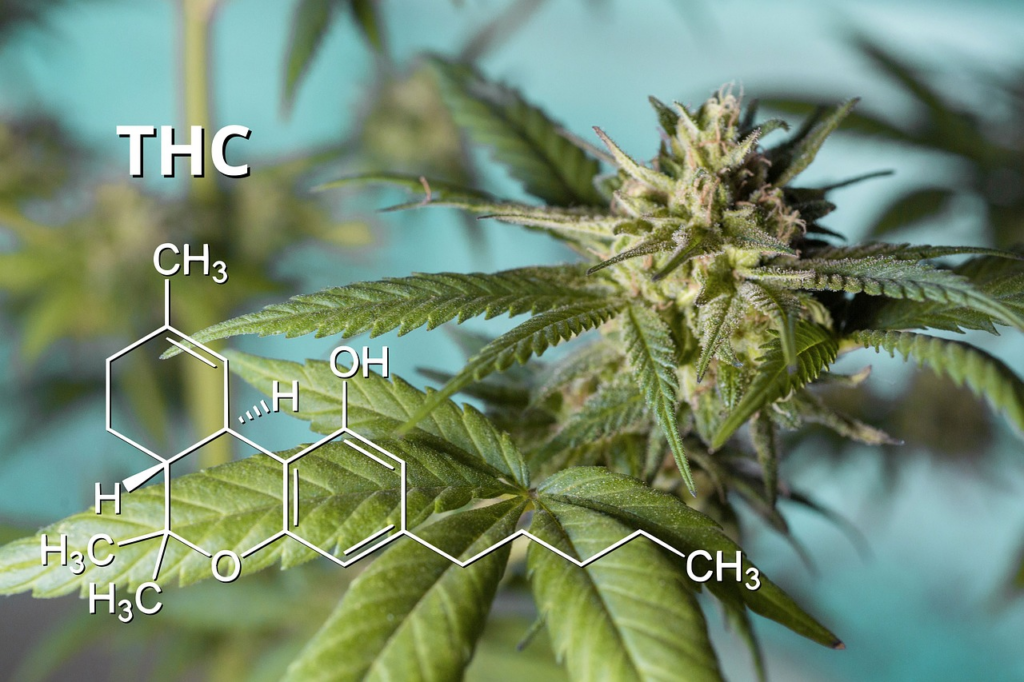
If you're new to the world of cannabis, it can be overwhelming to understand the different types of THC available. THC, or tetrahydrocannabinol, is the primary psychoactive compound found in cannabis plants that produces the "high" associated with marijuana use. But did you know that there are several different types of THC?
Delta-9 THC is the most talked-about variation of THC found in cannabis plants. It is abundant in both male and female plants, but more concentrated in the latter. This psychoactive compound binds with CB1 receptors in the brain and nervous system, resulting in altered mental and physical states such as disassociation from time, impaired memory, and relaxation of the body.
Despite its psychoactive properties, Delta-9 THC is being researched for its potential therapeutic benefits. Some of these health benefits include its ability to promote sleep, alleviate mood swings, reduce discomfort, and alleviate nausea or vomiting. Delta-9 THC is also known to stimulate appetite, making it helpful for those dealing with low appetite.
Delta-8 THC, a less abundant form of THC found in the cannabis plant, is gaining popularity in the cannabis industry. This compound is a double bond isomer of Delta-9 THC, which means that they have the same elements and atoms, but are structurally distinct. Delta-8 THC forms when Delta-9 THC ages and is exposed to oxidation.
Although Delta-8 THC is believed to produce a more clear-headed and energetic effect compared to Delta-9 THC, it is still considered to have similar psychoactive effects. Delta-8 THC interacts with the CB1 and CB2 cannabinoid receptors in the body and has been shown to have several potential benefits, such as pain relief and anxiety reduction.
However, due to its low concentration in the cannabis plant, most commercially available Delta-8 products are made by converting Delta-9 THC or cannabidiol (CBD) chemically. As a result, there are limited studies on the effects and safety of Delta-8 THC products. It is important to note that although Delta-8 THC is federally legal, the sale of Delta-8 products is not regulated by the FDA, which may pose a risk for consumers.
Delta-10 THC is a lesser-known cannabinoid that shares similar chemical properties as THC but is arranged differently, resulting in distinct effects. Unlike delta-9 THC, delta-10 THC occurs in extremely low amounts in the cannabis plant, making it difficult to consume high doses directly. Due to its rarity, most delta-10 products are synthetically developed in labs.
Delta-10 THC is classified as a minor cannabinoid, similar to delta-8 THC, and researchers have conducted little research on its effects on the body. As a result, the potential benefits and adverse effects of consuming delta-10 THC are still largely unknown. Further research is necessary to fully understand the potential of delta-10 THC as a therapeutic compound.
THCA is a type of THC that does not produce any mind-altering effects and is usually found in the stems, leaves, and flowers of the cannabis plant. Unlike other forms of THC, THCA's structure is not suited for CB1 receptors in the nervous system, which are responsible for psychoactive effects.
However, THCA can be transformed into other types of THC, such as THCV, Delta-8 THC, and Delta-9 THC, through a process that involves applying heat. This transforms the chemical composition of THCA molecules and makes them suitable to fit into the CB1 receptors in the body, producing therapeutic benefits.
Studies suggest that THCA may help alleviate conditions such as nausea and loss of appetite, epilepsy, arthritis, and inflammation in muscles, and diabetes. While more research is needed to fully understand THCA's therapeutic potential, it is a promising area of study in the cannabis industry.
THCV is a lesser-known type of THC that is produced through the breakdown of THCA during the process of decarboxylation, which occurs when medical marijuana is dried and vaporized. Although it is not well-known, it is gaining popularity for its positive effects.
Research suggests that THCV has a shorter chain of molecules and lower interaction with receptors, meaning that it does not produce mind-altering effects in low doses. However, higher doses can produce a clear and stimulating high. THCV interacts with the CB1 receptors in the body, but the effects are short-lived compared to other THC types. Unlike other types of THC, THCV is an appetite suppressant and does not stimulate the appetite.
Studies show that THCV may offer benefits such as regulating blood sugar and insulin resistance, neurological therapeutics for epilepsy and Alzheimer's, promoting bone development and growth, and reducing chronic pain and inflammation.
THCP, or tetrahydrocannabiphorol, is a newly discovered cannabinoid that has garnered attention due to its unique properties. It is believed to have 33 times the binding affinity for CB1 receptors as delta-9 THC, resulting in a more intense and euphoric effect.
The length of the side chains in a compound determines its ability to bind with receptors, and THCP has a seven-link side chain, which is the longest of any naturally occurring cannabis compound. This makes THCP structurally similar to delta-9 THC, but with a different arrangement of elements.
Currently, THCP exists in a legal grey area, much like delta-8 and delta-10 THC. There is a need for further research to fully understand the potential benefits of this compound.
THC-O acetate, also known as THC-O, is a synthetic cannabinoid derived from hemp. One of its primary advantages is that it is created from federally legal hemp, in contrast to THC, which is only legal in some states. However, the production of THC-O-acetate involves using a highly flammable chemical called acetic anhydride. Like THCP and Delta-10 THC, THC-O is one of the least studied THC analogs, so its potential advantages and side effects have yet to be discovered.

The sale of cannabis and access to cannabis-based products, including cannabinoid products, cannabis oil, and cannabis accessories, are subject to various regulations and restrictions. It is important to understand the definition of marijuana in your jurisdiction and to comply with all applicable laws and regulations.
The National Institute on Drug Abuse has compiled a list of medical conditions for which cannabis-based products, including those containing THC, may be helpful. However, it is important to consult with a healthcare provider before using these products and to be aware of the potential adverse effects.
In conclusion, choosing the right THC product requires careful consideration of several factors, including personal preference, tolerance, and intended use. With the vast array of products available, it can be overwhelming to make a decision. However, taking the time to research and ask for recommendations can make the process easier and ensure a more enjoyable experience.
DC Collective is one example of a reputable dispensary that offers a wide selection of THC products and knowledgeable staff to assist customers in selecting the right product for their needs. By following the tips outlined in this guide and seeking guidance from experts, consumers can make informed decisions and have a positive experience with THC products.

⚠️WARNING: Products sold on this site can expose you to chemicals including marijuana smoke, which are known to the State of California to cause cancer. For more information, go to http://www.P65Warnings.ca.gov
License #C12-0000022-LIC HOURS OF OPERATION: Mon-Thu 7am – 9pm
Fri-Sat 7am – 10pm
Sun 9am – 8pm